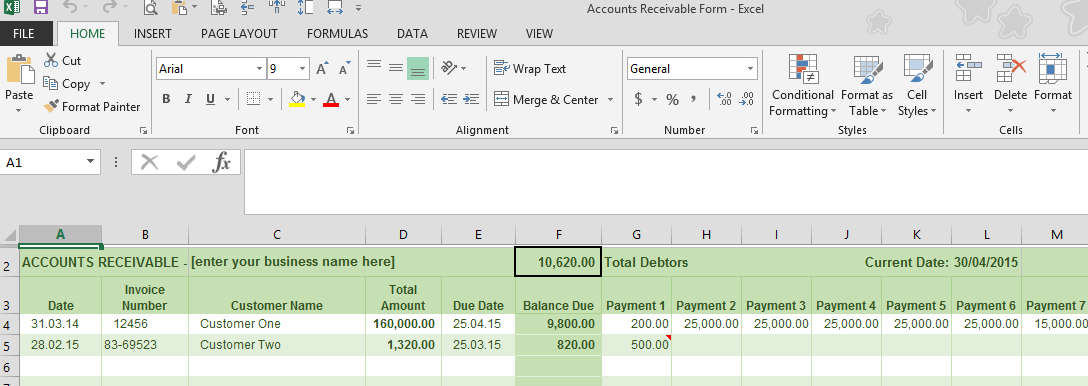
Construction firms — especially those undertaking large-scale projects like commercial or municipal buildings — may win only a few contracts per year. Thus, a typical chart of accounts for a contractor will look different from a manufacturer or high-volume retail or hospitality business. Sales staff will also be remunerated differently, and accounting needs to pay significant attention to the financial health of customers. Estimating quotes to be competitive while profitable and keeping them on track can be difficult because of the unique intricacies of each project. For example, labor, material costs and local taxes can vary widely depending on the type of building and where it is based.
- The key component of the WIP report is the projected cost which is needed to calculate the percent complete.
- PwC refers to the US member firm or one of its subsidiaries or affiliates, and may sometimes refer to the PwC network.
- That’s why it is better to track projects undergoing construction separately on a different balance sheet until completion.
- Typically, companies that utilize construction financing to build a property obtain permanent financing that replaces the construction loan.
- It offers a detailed snapshot of the current financial status of ongoing projects, providing crucial insights into costs incurred and revenues earned.
Deltek ComputerEase’s specialized work in progress reporting helps contractors track progress on every job. The appropriation of revenues and expenses should be made in the relevant accounting period according to the work’s percentage completion. It also dictates which revenues and costs related to a construction contract should be recorded and when to record.
Construction-in-Progress Accounting (CIP)
Wajiha is a Brampton-based CPA, CGA, and Controller with 17+ years of experience in the financial services industry. She holds a Bachelor of Science Degree in Applied Accounting from Oxford Brookes University and is a Chartered Certified Accountant. Wajiha spearheads Monily as its Director and is a leader who excels in helping teams achieve excellence.

She talks about business financial health, innovative accounting, and all things finances. To minimize discrepancies and keep records clean, construction companies usually opt for double-entry accounting, in which entries are added twice to a ledger to record a single transaction. It is the approved bookkeeping method in the construction industry, viewing the complexities involved. Construction firms may even choose a specific revenue recognition method on a per-project basis depending on factors such as size and expected length.
Best Practices for CIP Accounting
Determining the appropriate allocation of costs to different construction projects can be complex, especially when multiple projects are underway simultaneously. Businesses need robust systems and processes to track and allocate costs to specific projects accurately. The percentage of completion method recognizes revenue and expenses based on the progress of a project.
In the company’s balance sheet, construction in progress is most commonly found under the head of PP & E( Plant, Property & Equipment). A recently introduced GAAP revenue recognition standard, Accounting Standards Code (ASC) 606 affects how contractors should recognize revenue for long-term contracts using PCM. ASC guidance is that companies should recognize revenue based on performance obligations, which are promises to deliver distinct goods or services to a customer. A contract may include a single performance obligation, or it may include several. Contractors must identify performance obligations in the contract and allocate a price to each.
At that time the company removes the construction in progress account from the balance sheet, replacing it with a regular long-term asset account. Typically, companies that utilize construction financing to build a property obtain permanent financing that replaces the construction loan. Companies that don’t track CIP costs accurately and separately make their records more complicated than they need to be. Mixing CIP projects with others create a hazy picture of business finances as it indicates that a company is generating expenses that are producing zero profits.
It’s easy to simply compare the total costs spent to date with your estimated budget and assume that a project is running smoothly if your cost spent to date has not exceeded your budget. But, using multiple calculations, you can see a more accurate picture of a project of where the job stands, including if it’s been over or underbilled. The key component of the WIP report is the projected cost which is needed to calculate the percent complete.
Understanding Construction-in-Progress (CIP) Accounting
However, as the company expands, recruits more employees, and works simultaneously on multiple projects, tracking transactions on a spreadsheet gets difficult and time-consuming. Once the asset is put into service, the construction in progress account will be credited, and the debit is transferred to property, plant, and equipment. Below we’ll show you an example of what the recording may look like for a company. Construction in progress accounting is also a prime target for auditors due to the length of time the account can be left open. Because companies can store costs under the account for extended periods of time, they can avoid depreciation, therefore reports could have profits listed at a higher value than they really are. Due to the distinct and unique nature of the industry, certain financial statements only exist for construction accounting.
Unlike companies in other industries, such as retail or manufacturing, construction accounting typically focuses on custom projects, each of which must be managed for profitability. Large-scale construction jobs can take years to complete and often require hundreds of separate expenses. Hiring an experienced accounting team is the best way to ensure that your company maintains accurate, detailed, and up-to-date accounting books through every step of the construction process. If the financial statements have ‘construction in progress or process’ under the head of PP&E, it is a ‘build to use’ asset. Whereas, if the account appears under the heading of ‘Inventory and assets,’ it is probably a ‘build to sell’ asset.
Meeting prevailing wage requirements can be complex because rates change frequently and vary between jurisdictions. Here is an example to help you visualize what construction-in-progress may look like in your accounting books. Subtracting the earned revenue to date ($100,000) from the amount billed ($600,000) minus cost to date ($400,000) leaves a value of positive $100,000. Once you have viewed this piece of content, to ensure you can access the content most relevant to you, please confirm your territory.
This allows you to identify potential problems early, such as chasing invoices for payments or re-evaluating budgets where costs are adding up. However, you must know that the nature of costs and revenues in every construction contract varies. For a construction firm that makes a contract to sell fixed assets, the objective is the same. When construction on the project completes, and the asset is placed in service, the CIP account is shifted to related fixed-asset accounts. Keeping accurate and up-to-date construction-in-progress accounts is also important because they tend to be the target of auditors.
Continuous learning and skill development contribute to the effectiveness of CIP accounting practices. Construction in progress, also referred to as CIP, is an accounting term used to describe the temporary, special classification of assets under construction. Companies track one or more construction projects under the CIP heading until construction is complete.
The choice of revenue recognition method depends on factors such as the size of the contractor’s business as well as the duration and type of projects the company works on. Determining whether construction projects will be profitable is more difficult than in industries such as retailing or manufacturing, Construction in progress accounting due to all of the factors above. Each project brings its own unique challenges, while change orders and fluctuating expenses during projects further complicate the picture. For most contactors, change orders are the norm rather than the exception — especially on longer projects.
Regular Accounting vs. Construction Accounting
Unlike other businesses, construction companies have to manage other anomalies like job costing, retention, progress billings, change orders, and customer deposits. These extras make CIP or construction in progress accounting relatively more complicated than regular business accounting. The Work-in-Progress (WIP) Schedule is an integral financial tool in the construction industry. It offers a detailed snapshot of the current financial status of ongoing projects, providing crucial insights into costs incurred and revenues earned.
It’s important to set up the right accounting structure to ensure each company’s investment, revenue and profit is accurately reported. Retainage is the portion of the agreed-on project price that is withheld until the job is completed, or for a specified period. The goal of this long-standing practice is to create a financial incentive for contractors to complete the project satisfactorily and to protect owners if problems appear. Retainage amounts are often substantial, amounting to 5% to 10% of the contract value. This emphasizes the fact that accurately accounting for all costs is key to determining whether projects make a profit, break even or lose money.
Construction Accounting Best Practices
The three methods most commonly used to calculate the projected cost are estimating the percent complete to date, using units completed to date, or estimating the cost to finish. In addition, WIP reporting enables you to create accurate financial statements, outlining exactly what was spent on individual projects and where. This can then be used to inform wider decision-making, especially concerning the business’s overall financial health and growing bottom-line profits. CIP accounting allows businesses to monitor project costs and progress in real-time.